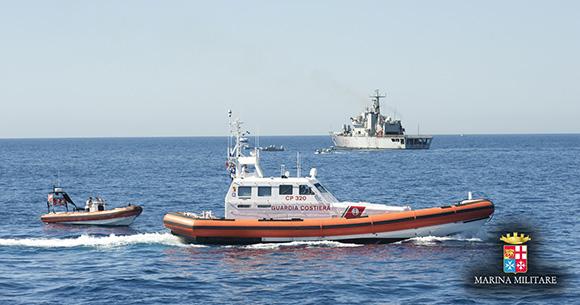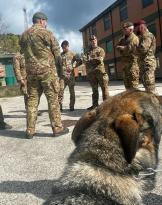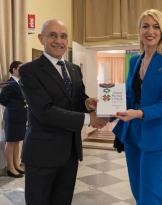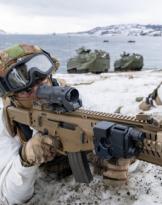The 7 and 8 in July the exercise was held in Cagliari Caralis, the most important activity of the year in the anti-pollution sector conducted by Navy ships.
Theater of the exercise, this year, the waters off the coast of Sardinia, in front of Cagliari. As in recent editions, the exercise proposed two main moments, a theoretical technical one and a practical operational one.
The surveillance and control of the marine environment is exercised by the Corps of the Port Authorities - Coast Guard, as a function dependent on the ministry of the environment, protection of the territory and the sea. The Navy also has patrol vessels equipped with systems that serve, in case of need, to cope with environmental emergencies, for example on the high seas. These ships, therefore, can be used as means of support in case of emergency.
For this reason, exercises are periodically carried out necessary to verify the procedures, the efficiency of the systems and train the crews. Then, annually, a complex exercise takes place that involves the involvement of several ships together with other local vehicles, the so-called advanced training, which serves to accustom all staff to face emergency situations with the utmost realism.
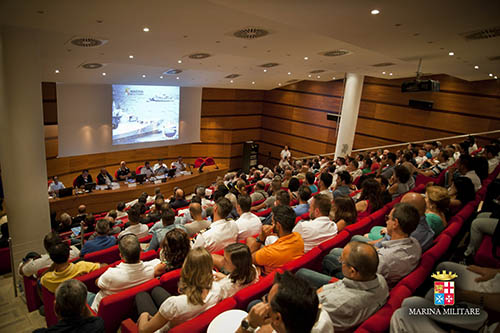 La Caralis 2016 it was therefore a moment of sharing and meeting for all the "actors" who share the same institutional purpose, the protection of the marine environment and the fight against marine pollution.
La Caralis 2016 it was therefore a moment of sharing and meeting for all the "actors" who share the same institutional purpose, the protection of the marine environment and the fight against marine pollution.
The organization of the Caralis was coordinated by Patrol Forces Command of Augusta (COMFORPAT), through the First Patrol Squadron (COMSQUAPAT UNO), to which the 6 offshore patrol vessels of the Navy with anti-pollution capabilities belong, the ships Orione e Sirio (Class Constellations II series) e Cassiopeia, Pound, Spica e Vega (Class Constellations The series).
The seminar, at its ninth edition, took place at the University of Cagliari, and saw representatives from the Navy, the academic and scientific world alternate as well as specialists in marine environmental protection. The various contributions have, on the whole, provided an interesting and current framework on how to react to an environmental emergency and on the progress of research and systems applied to environmental defense. In addition to representatives of the Navy, which outlined the ability to combat marine pollution and the dual use and energy and environmental efficiency of the Navy, representatives from the Civil Protection Department of the University of Cagliari took part in the National Research Council - Institute for Coastal Marine Environment (CNR-IAMC) of Oristano, of the company SARAS spa, of theHigher Institute for Environmental Protection and Research (ISPRA) and of theNational Agency for Environmental Protection-Sardinia (ARPAS).
The activity at sea the following day, July 7, saw three patrol vessels with anti-pollution capabilities, the ships Sirio, Orione e Vega, in coordination with the means of the Port Authority and the Castalia Consortium, fielding over 250 men and women and useful systems to counter a simulated spill of over 500 cubic meters of hydrocarbons, which was pretended to have escaped into the Gulf of Cagliari from a crashed oil tanker, simulated by a ship Procida, following a collision, all in an absolutely plausible scenario, considering the volume of merchant traffic in the area of the exercise linked to the local petrochemical center.
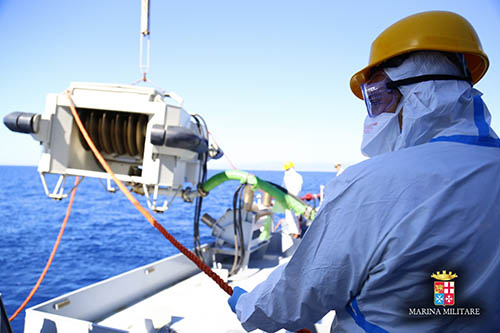 Containment of the polluting stain with floating booms was carried out, a sample of the contaminated water was taken to carry out the analysis on board theOrione and therefore to optimize the anti-pollution interventions, all the ships have used their own skimmer to collect hydrocarbons from the sea (removal).
Containment of the polluting stain with floating booms was carried out, a sample of the contaminated water was taken to carry out the analysis on board theOrione and therefore to optimize the anti-pollution interventions, all the ships have used their own skimmer to collect hydrocarbons from the sea (removal).
At the same time the prefecture of Cagliari, in constant teleconference connection with the units at sea and the operations room of the Harbor Master's Office, activated its operations room, simulating to implement interventions aimed at contrasting the (simulated) stranding on land oily spot.
During the sea phase of the Caralis the Navy ships used a synthetic fuel of renewable origin alternative to oil, the so-called Green Diesel, which allows CO40 emissions to be reduced by around 2% and the production of fine dust can be reduced to a not inconsiderable extent. The use of these fuels, which sees the Navy at the forefront of the world, is part of the concept of Green Fleet.
This type of exercises are very important because they allow the crews to be trained in a realistic way in anti-pollution operations, in coordination with the local means that operate to safeguard the sea, under the guidance of the ministry of the environment and the protection of the territory and the sea on national scale.


